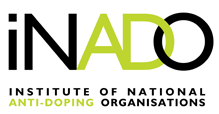Analysis of doping control test results in individual and team sports from 2003 to 2015 / Millán Aguilar-Navarro, Jesús Muñoz-Guerra, María Del Mar Plara, Juan Del Coso. - (Journal of Sport and Health Science 9 (2020) 2 (March); p. 160-169)
- PMID: 32099724
- PMCID: PMC7031807
- DOI: 10.1016/j.jshs.2019.07.005
Abstract
Background: Determining the prevalence of doping in sport might be useful for anti-doping authorities to gauge the effectiveness of anti-doping policies implemented to prevent positive attitudes toward doping. Using questionnaires and personal interviews, previous investigations have found that the prevalence of doping might be different among different sports disciplines; however, there is no sport-specific information about the proportion of adverse and atypical findings (AAF) in samples used for doping control. The aim of the present investigation was to assess the differences in the frequency of adverse analytical and atypical findings among sports using the data made available by the World Anti-Doping Agency.
Methods: The data included in this investigation were gathered from the Testing Figures Reports made available annually from 2003 to 2015 by the World Anti-Doping Agency. These Testing Figures Reports include information about the number of samples analyzed, the number of AAFs reported, and the most commonly found drugs in the urine and blood samples analyzed. A total of 1,347,213 samples were analyzed from the individual sports selected for this investigation, and 698,371 samples were analyzed for disciplines catalogued as team sports.
Results: In individual sports, the highest proportions of AAF were 3.3% ± 1.0% in cycling, 3.0% ± 0.6% in weightlifting, and 2.9% ± 0.6% in boxing. In team sports, the highest proportions of AAF were 2.2% ± 0.5% in ice hockey, 2.0% ± 0.5% in rugby, and 2.0% ± 0.5% in basketball. Gymnastics and skating had the lowest proportions at (≤1.0%) for individual sports, and field hockey, volleyball and football had the lowest proportions for team sports (≤1.4%).
Conclusion: As suggested by the analysis, the incidence of AAF was not uniform across all sports disciplines, with the different proportions pointing to an uneven use of banned substances depending on the sport. This information might be useful for increasing the strength and efficacy of anti-doping policies in those sports with the highest prevalence in the use of banned substances.
